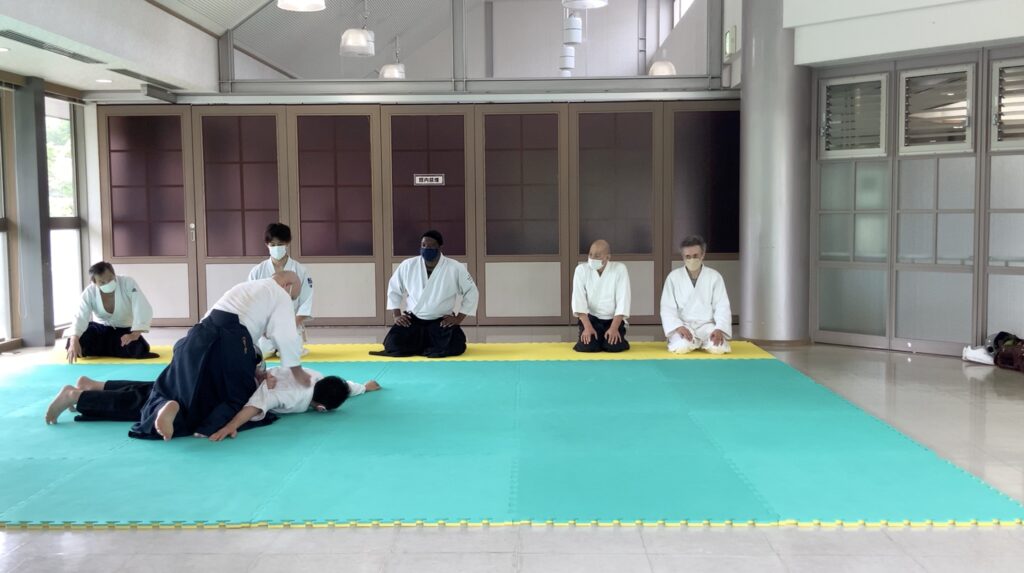Hello, I am Sugawara, your instructor.
In a change from my previous columns, I am going to talk about aikido in a geeky way.
We did aikido together this time,
Recently, I was fortunate enough to take aikido from another school.
Aikido MUGENJYUKU belongs to a school called YOSHINKAN. It is characterized by its practicality, so much so that riot police and policewomen study it, and by its soft movements that embody the martial art of Wago.
The schools we practiced with this time were from a mainstream aikido school called Aikikai. It is characterized by soft and flowing movements, inherited from the late founder of Aikido, Morihei Ueshiba.
What I wanted to learn from Aikikai
Anyway, the practice feels good. I am aware of the flow of my body and do it without strain. I can visualize a streamlined shape in my mind. I feel that there are many techniques that make both of us less stiff and relaxed. Focusing on the kiai with the opponent. At MUGEN JUKU KAMAKURA, since the majority of the students are beginners, the focus is on oneself relatively often. The students do not return to their original positions when practicing a technique, but rather continue to practice left and right, which allows them to practice twice as many techniques and work on them without worrying about the opponent. It was like practicing with a yudansha, focusing on the connection and the use of the hips. I practiced ichikkyō, which was much more effective than the kuji method of yōshinkan. The sense of being controlled is much better here.
Points that reaffirmed the value of the Yoshinkan
From stance to bodywork to techniques are systematically organized so that anyone can learn techniques that can be used by anyone in the shortest possible time. The processes of the techniques are broken down and correct answers are provided, so that any instructor can teach the same techniques to some extent. It is designed to be used against an opponent who resists, and can be used as a technique to protect a loved one.


